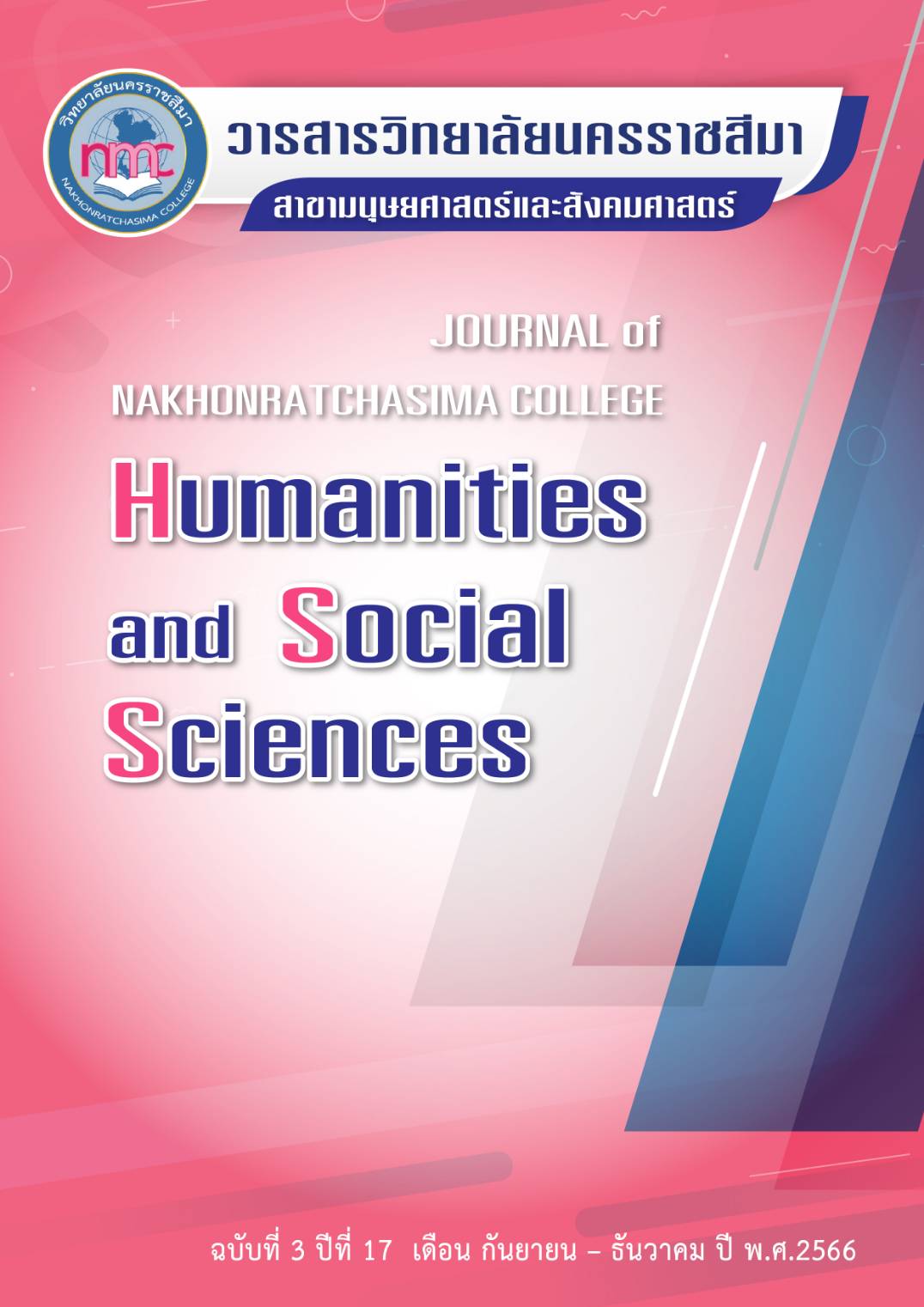Rural Landscape Evaluation Research Under Environmental Aesthetics Vision
คำสำคัญ:
Rural Landscape, Environmental Aesthetics, Landscape Evaluationบทคัดย่อ
The purposes of this research were to (1) study the rural landscape lies in combing the concept of environmental aesthetics and the evaluation methods (2) to analyzes the theoretical development of rural landscape evaluation comprehensively, so as to build a plan for the construction of a native and rural landscape evaluation system in China, and then conduct reasonable protection and planning of rural landscapes reasonably and design, promote the construction of beautiful villages with contemporary happiness, livability, and sustainable development of Chinese contemporary Chinese. This study uses an expert evaluation method, psychological physics method, and hierarchical analysis method to promote the construction and development of rural landscapes, and support it with certain evaluation technologies. They were selected by questionnaires from Villagers, experts, students. The instrument for collecting data was through table analysis and computer analysis. The analysis data by descriptive statistics and content analysis.
The research results were found as follows;
- The formation of rural landscape space originated from the interaction between human production activities, life activities and natural environment. It is an important part of the perception of rural landscapes. Humans can have a sense of perception and experience in the form of rural landscape space.
- The evaluation results show that the rural landscape with farming is distributed in F10, E9, G9, J6, K6 and other plots. These areas include farmland, fruit forests and other elements
เอกสารอ้างอิง
Allen Carlson and Sheilalintott, (2007). ed. Nature, Aesthetics,and Environmentalism: From Beauty to Duty [M]. New York: Columbia University Press,
Appleton K, Lovett A, Sunnenberg G, etal. (2002). Rural landscape visualization from GIS data bases: a comparison of approaches,options and problems [J]. Computers,Environment and Urban Systems, 26(2):141-162.
Appleton K, L ovett A. (2003). GIS based visualization of rural landscapes: defining “sufficient” realism for environmental decision making [J]. Landscape and Urban Planning, 65 (3):117-131.
AppletonJ. (1989). The experience of Landscape[J]. Journal of Aesthetics&Art Criticism,1989,34(3):367.
Bulut Z Yilmaz H. (2008). Determination of landscape beauties through visual quality assessment method:a case study for Kemaliye [J]. Environ Monit Assess, 141 (1):121-129.
(Canada) Allen Calson. (2006). Environmental aesthetics: appreciation of nature, art and architecture [M]. Yang Ping, translated. Chengdu: Sichuan People's Publishing House, 5.
(Canada) Allen Calson. (2006). Nature and landscape [m]. Chen Li Bo, translated. Changsha: Hunan Science and Technology Publishing House, 2.
Cao Juan, Liang Yi, Zhang Junhua. (2004). Preliminary Examination and Evaluation of Beijing Nature Reserve [J]. Chinese garden, 7: 67-71.
(Day) Fujii Akira. Settlement visit [M]. Ning Jing, translation. Beijing: China Construction Industry Press, 2003: 16.
(De) Boma Tong. Aesthetics [M]. Wang Xuxiao, translated. Beijing: Culture and Art Publishing House, 1987.
Deng Qiucai, Han Mingzhe, Duan Guangde, Han Peng. Analysis and evaluation of landscape quality of Haden National Forest Park [J]. Journal of Inner Mongolia Forest College, 1996, (18) 2: 11-18.
Franziska Rom,Arne Arnberger,Robert C.Burns. Exploring differences in mountain landscape preferences and perceptions between Austrian and United States protected area visitors [J]. Eco Mont journal on Protected Mountain Areas Research,2013,5 (2):35-46.
(France) Rousseau. Ai Erner [M]. Li Pingzheng, translated. Beijing: People's Education Press, 2001: 1.
Haidong Shang, I D B i shop. Visual Thresholds for Detection, Recognition and Visual Impact in Landscape Settings [J]. Journal of Environmental Psychology, 2000,76: 342-354.
He Hui, Yu Baichun. "Scenery" and "Guan" -The urban landscape characteristic "morphology" preference [J]. Planner, 2010, (09) 26: 105-108.
Henan Provincial Institute of Cultural Relics and Archeology, the Henan team of the Institute of Archeology of the Chinese Academy of Social Sciences, et al. Henan Lingbao Ding Dingyuan and surrounding archeological surveys [J]. Huaxia Archeology, 1993, 3.
Liyama N, Kamada M, Nakagshi N.Ecological and socialevalution of landscape in a rural area with terraced paddies in south western Japan [J]. Landscape and Urban Planning,2005,70 (3):301-305.
Lowenthal, David.”The bicentennial landscape: a mirror held up to the past.” [J].Geographical Review,1997:253-267.
Lu Zhaosu, Yu Guobao, Zhang Zhiqiang, Wu Jingli, Zhao Renshou, Zhu Nailong, Ren Baoshan. The dynamics of Zijin Mountain Landscape Forest and its business countermeasures [J]. Journal of Nanjing Forestry University (Natural Science Edition), 1985, 3: 1-10.
(Qing) Shen Fu. Floating Six Ji [M]. Beijing: People's Literature Press, 1980: 19.
(Qing) Wei Qingjiang. House spectrum words. House Spectrum Guide [M]. Wedtang, the 38th year of Qianlong in the Qing Dynasty.
ดาวน์โหลด
เผยแพร่แล้ว
รูปแบบการอ้างอิง
ฉบับ
ประเภทบทความ
สัญญาอนุญาต
จรรยาบรรณผู้เขียนบทความ
ผู้เขียนบทความต้องรับรองว่าบทความนี้ไม่เคยตีพิมพ์ในวารสารใดหรือสิ่งพิมพ์อื่นๆ มาก่อน ต้องไม่คัดลอกผลงานผู้อื่นมาปรับแต่งเป็นบทความของตน และไม่ได้อยู่ระหว่างการเสนอเพื่อพิจารณาตีพิมพ์ อีกทั้งยอมรับหลักเกณฑ์การพิจารณาและการตรวจแก้ไขบทความต้นฉบับโดยกองบรรณาธิการวารสารวิทยาลัยนครราชสีมา สาขามนุษยศาสตร์และสังคมศาสตร์
บทความทุกเรื่องได้รับการตรวจพิจารณาทางวิชาการโดยผู้ทรงคุณวุฒิที่มีประสบการณ์และมีความเชี่ยวชาญตรงตามสาขาของบทความ ซึ่งผู้เขียนต้องแก้ไขตามคำแนะนำของผู้ทรงคุณวุฒิภายในระยะเวลาที่กำหนด หากไม่เป็นไปตามกำหนดกองบรรณาธิการขอสงวนสิทธิ์และยกเลิกการตีพิมพ์โดยจะแจ้งให้ทราบต่อไป
ข้อความที่ปรากฏในบทความของวารสารนี้เป็นความคิดเห็นของผู้เขียนซึ่งไม่เกี่ยวข้องกับวิทยาลัยนครราชสีมาแต่อย่างใด และกองบรรณาธิการขอสงวนสิทธิ์ในการพิจารณาและตรวจประเมินบทความเพื่อตีพิมพ์ในวารสารของวิทยาลัยนครราชสีมา สาขามนุษยศาสตร์และสังคมศาสตร์



